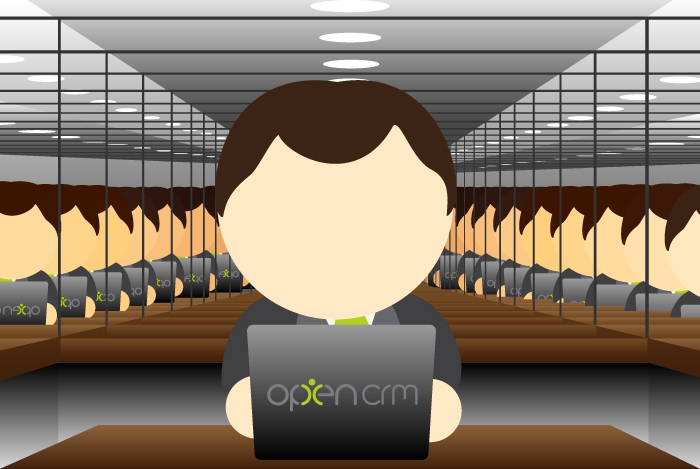Why We Use OpenCRM at OpenCRM
23 Jun 2015
I’m going to let you into a big secret. Here at OpenCRM, the vast majority of our work is done within our cloud software system itself. Yep, that’s what we do. In essence, it means we are not only one of our biggest customers, but also our sharpest critics.
All of our departments use the system. Sales rely on the Leads and Opportunities modules heavily, before handing over to accounts who use the ordering and invoicing side of things. When a new Project is set up, the project management team depend on the information that the sales people have entered on the system, to provide a convenient audit trail of how the relationship with the customer has been built thus far. The projects team then build Activities around the Project itself, working with our clients to get their own OpenCRM systems off the ground. Often aspects of the project require some assistance from the support folk, so this is when our HelpDesk and FAQ modules come into play.
When a project is successfully completed, the client is handed to one of the account managers who then takes over the reins, managing the relationship from a longer term perspective. In the meantime, the operations and compliance teams can dip into the reporting side of things to keep track of projects, and ensure things are running as smoothly as possible. All the steps of the journey are tracked within OpenCRM in such a way that anyone can see the state of play in each customer relationship.
With all of this reliance on our own system, we are quick to notice if anything is not quite right; not to mention being in a great place to suggest system enhancements and new features. This also means we are also often the guinea pigs when new components are integrated into OpenCRM.
Exploring changes made to the system helps put us in the same position as our customers, and so we can pre-empt (and document) any potential pain points, as well as letting clients know when some of the great new features get released.
When a client calls up with a question about using the system, we don’t need to try and put ourselves in the customer’s shoes – we are there already.
My role is to build our Customer Success team and I work with our clients and prospects helping them get the most from their subscription – it is a fun challenging role as no two days are the same. When not in the office I’ll be either making a noise on my guitar or getting my trainers on for a run out in the Yorkshire Dales, North York Moors or the Lake District.